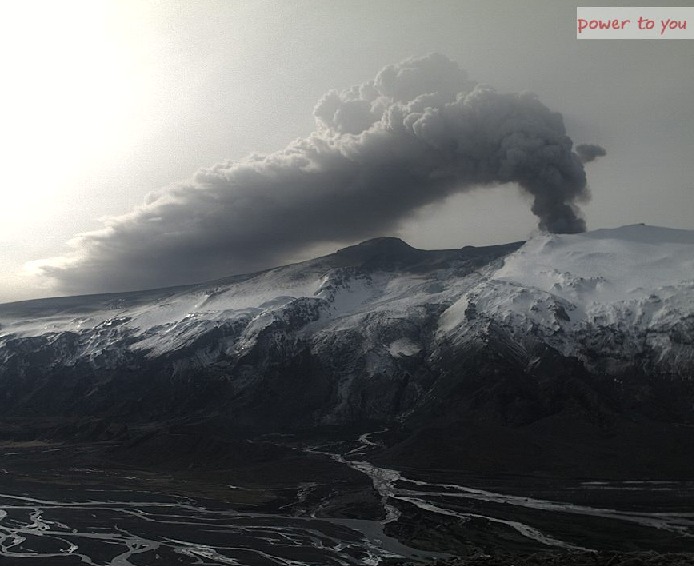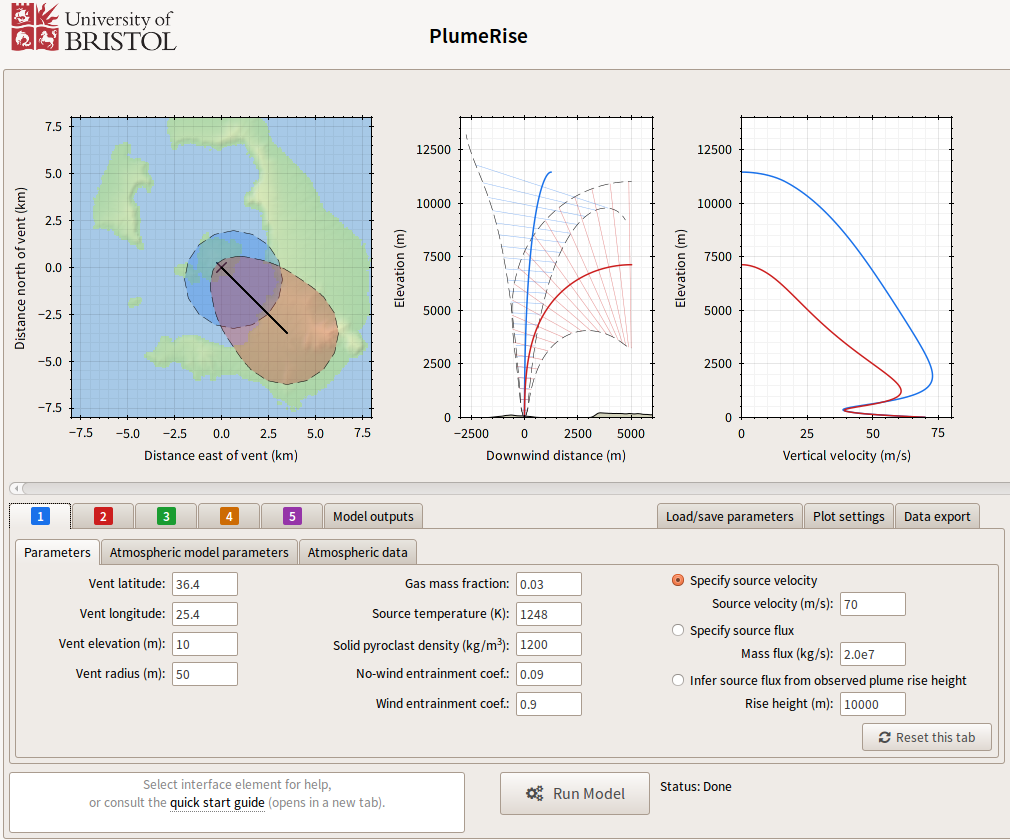Breadcrumb
Mark Woodhouse
I'm a postdoctoral research assistant in the Fluid Dynamics, part of the Applied Mathematics group. My current research involves the development of mathematical models to describe buoyant plumes from volcanic eruptions, and the evolution of these plume into ash clouds. This research is supervised by Andrew Hogg in the School of Mathematics and Jeremy Phillips in the School of Earth Sciences.
PlumeRise
Our model of volcanic plumes in a cross wind is available to use as a web-tool.
Try PlumeRise at www.plumerise.bris.ac.uk

Eyjafjallajökull on 20th April 2010 (image courtesy of Vodaphone Iceland)
Vanaheim project
I am part of the NERC-funded Vanaheim Consortium "Characterisation of the Near-Field Eyjafjallajökull Volcanic Plume and its Long-range Influence." This eruption resulted in the closure of airspace over Europe for several days in 2010.
We have developed mathematical models of volcanic plumes rising in a cross wind and demonstrate the the wind can have a strong effect on the rise of the plume, limiting the height to which the plume rises in the atmosphere. We have used these models to develop a new relationship between the rise height of volcanic plumes and the source mass flux that explicitly includes the wind speed. These results will allow improved estimates of the source mass flux to be made for volcanic plumes that are strongly affected by meteorology.
In previous research positions I have been involved in the development of mathematical models of particle-size segregation in dense granular avalanches, and in modelling fluid flow in the human brain to improve direct drug delivery methods.
Presentations available to download
Mathematical Models of Volcanic Plumes
A review of integral models of buoyant plumes and their use in describing volcanic eruption columns. The classical Morton, Taylor & Turner model forms the foundation of the volcanic plume models of Woods. We show how the predictions of these model compare with observations. The effect of atmospheric conditions on the plumes is considered.
Mathematical Models of Volcanic Plumes
An extended review of integral models of buoyant plumes and their use in describing volcanic eruption columns. The classical Morton, Taylor & Turner model forms the foundation of the volcanic plume models of Woods. We show how the predictions of these model compare with observations. The effect of atmospheric conditions on the plumes is considered. Finally, a time dependent plume model is introduced.
The effect of wind on the rise of volcanic plumes: determining the ‘source term’.
Slides from an invited talk at the ESA-EUMETSAT Volcanic Ash Strategic Team meeting in Dublin, March 2013. Meteorology can have strong effect on the rise of volcanic plumes. In particular, cross winds can increase the mixing of atmospheric gases into the plume, reducing the rise height of the plume. In this presentation we demonstrate how integral models of volcanic plumes in a cross wind can be used to determine the source mass flux from observations of the height of plumes during volcanic eruptions.

